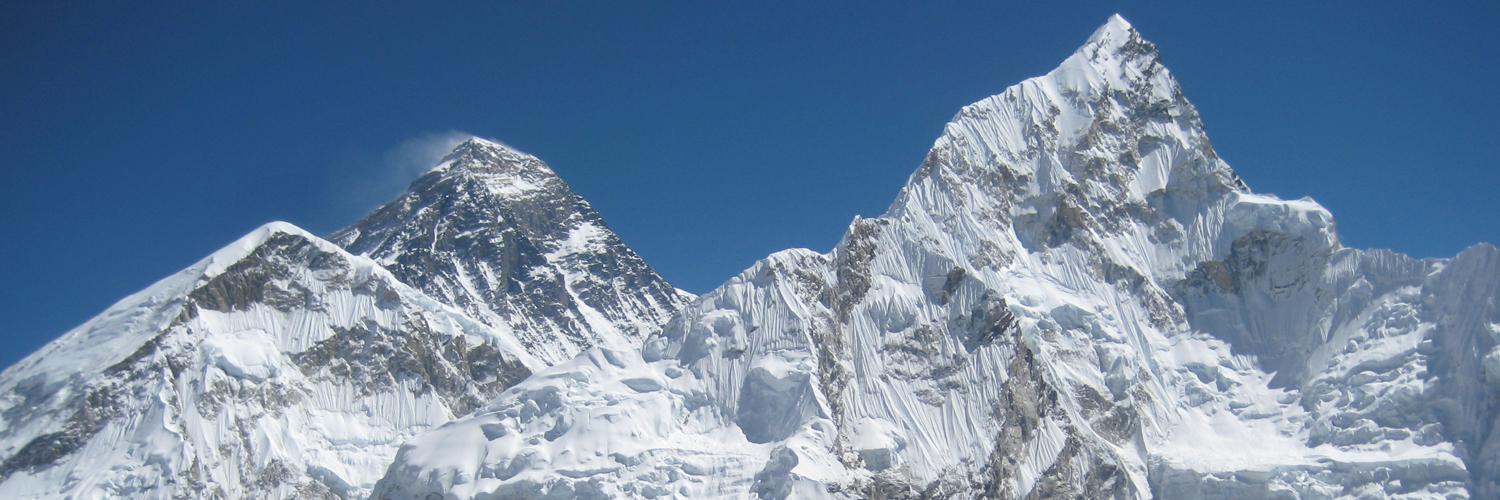With breathtaking views of the Himalayas and the opportunity to stand in the shadow of the highest mountain in the world, trekking to Everest Base Camp (EBC) entices visitors. For many people, reaching Everest Base Camp is a dream journey and on a bucket-list. EBC, which is 5,364 meters (17,598 feet) above sea level, provides an amazing combination of natural beauty, cultural richness and spectacular panoramas of the world’s highest peaks. For those who have never hiked before, though, it could appear challenging. Below is the necessary information and guide to prepare for the journey to Everest Base Camp.
Getting there
Usually, the trek to EBC starts with a flight from Kathmandu to Lukla which takes about 45 minutes. The entrance to the Everest region is the Lukla Airport (Tenzing Hillary Airport), which is a small airstrip renowned for its difficult runway. There is another option of an overland drive too but it takes more days (6 days) to reach Lukla than to Phakding alone, so the most popular option is to fly from Kathmandu to Lukla and start the trek. .
In high trek seasons like March to May or September to November, the Kathmandu/Lukla/Kathmandu flights are replaced with Ramechap/Lukla/Ramechap flights to avoid the increased air traffic congestion. The flight from Ramechap to Lukla is just 20 minutes and vice versa. Ramechap is located 5 hours drive from Kathmandu.
Everest base camp trek best time to visit
One of the best times for Everest Base Camp trek is from March to May. During these months, it will be pleasant weather with clear skies offering a spectacular panorama of the mountains, especially Mount Everest. The landscape is brightly colored by the full bloom of rhododendrons and other flowers. Since this is one of the busiest times on the trail, you will meet a lot of other hikers from around the world.
Another popular time for the Everest Base Camp trek is in the fall, from September to November, during the post-monsoon (autumn) season. Clear skies and stable weather make these months ideal for trekking. The weather is great, providing clear views of the mountains. The excellent weather makes it possible to see the mountains clearly. Like spring, autumn is a popular trekking season, which means that routes and teahouses are busy and crowded.
Besides spring and autumn, a trek to EBC can be done in the winter too, from December to February. The skies are often clear but be prepared for extremely cold temperatures with the possibility of heavy snowfall making the trails more challenging and sometimes impassable. A lot fewer trekkers will be on the trail during winter giving you a more peaceful experience.
How to prepare yourself for EBC trek?
Everest Base Camp is a moderately challenging graded trek. You don’t need mountaineering skills to reach EBC but this is also not a stroll in the park. A positive attitude, better preparation and reasonable fitness are sufficient to successfully complete this trek. Put an emphasis on strength training, and cardiovascular fitness. You should prepare yourself 2-3 months before the trek’s departure with physical exercises like walking, and running. Climbing stairs up and down is a good idea since the trek involves many ascending and descending. Before starting the hike, consult with your doctor, particularly if you have any pre-existing medical issues.
Safety tips for Everest Base Camp Trek
Altitude is the real concern during EBC trek besides other things like injuries or illness. You should ascend gradually and have rest days for proper acclimatization. Give your body enough time to acclimate to the altitude which you gain on a daily basis as you trek along. You can follow a simple practice of "climb high, sleep low" to avoid altitude sickness. You should be aware of the symptoms like headache, nausea, dizziness and take the appropriate safety measures. If the symptoms get worse then you should immediately descend down to a lower altitude. Not to let yourself dehydrate, you should drink plenty of water. You should avoid alcoholic beverages as they will dehydrate you fast and aren’t good while at high altitudes.
For other illnesses like cold, diarrhea, flue or injuries, your guide will have a basic first-aid kit with medicine supplies and basic treatment but may not be sufficient for major injuries or illness, so you should walk/trek more carefully sticking with your guide and group, and not to divert on your own leading to wrong paths or slippery cliffs. The medical facilities in the mountains are often several days of walk and are not equal to the cities. For serious injuries or altitude sickness, the only option is to rescue by helicopter to Kathmandu.
Everest base camp packing list
It’s essential to pack the right items for the trek and the packing list also depends on the season you are trekking. You should pack smart instead of stuffing with unnecessary things. Below are the important items, regardless of the season.
Clothing: Layered clothing is essential. Pack thermal base layers, insulating mid-layers, and a waterproof outer layer.
Footwear: Trekking boots with good ankle support.
Accessories: Gloves, hats, sunglasses, and trekking poles.
Miscellaneous: Water purification tablets, first aid kit, high-energy snacks, headlamp, and personal hygiene items.
Everest base camp accommodation
Everest Base Camp Trail is the most popular trail in the world so there are numerous mountain lodges better known as ‘teahouse’ along the path that provide basic lodging and food. They offer much-needed relaxation and rest after a tiring day’s trek and connect with other hikers from around the world. There’s also an option of luxury accommodation in the Everest base camp trek but they are available at the lower altitudes only and not up to the Everest Base Camp.
Food on Everest Base Camp Trek
You can expect easy yet filling meals, frequently consisting of rice, noodles, and lentils but the continental menu is also available but limited if compared to the cities. Usually, for breakfast, you will get Bread, Eggs, Pancakes, Porridge, Muesli or cornflakes with hot milk, Rice Pudding, Nepali bread. For lunch or dinner, the menu comes with Dal Bhat (traditional Nepali meal consisting of lentil soup (dal), rice, vegetables, pickles), Momos, Thukpa, Pasta and macaroni, Pizza and Sandwiches, Spaghetti, Sherpa Stew ‘A Hearty Trekker’s Delight’.
In order to reach EBC, you must get your body to continue consuming calories. You burn around two thousand calories a day when walking. Regaining energy requires eating.
Cultural Etiquette
The Sherpa people, who have a rich cultural heritage, are the local residents in the Everest region. You should respect local customs, dress modestly, and get consent before snapping pictures of individuals or places of worship.
Everest base camp permits
Basically, there are two permits required for trekking to Everest Base Camp which are as follows. These two permits are handled by your trekking company like Marron Treks and you don’t have to worry about permits while booking through us.
1. Sagarmatha National Park Entry Permit: for entry and trekking in this national park which is also a UNESCO World Heritage Site.
2. Khumbu Rural Municipality Permit: for entry into the rural municipality in Everest region.
Trekking to Everest Base Camp is one of the best treks in the world that requires good planning and better preparation. You'll be well-prepared to enjoy the journey in a responsible and safe manner by going through this guide. Enjoy your every step as well as the majestic scenery and culture as you trek along.
Author: Marron Treks
Date: 16th May, 2024


